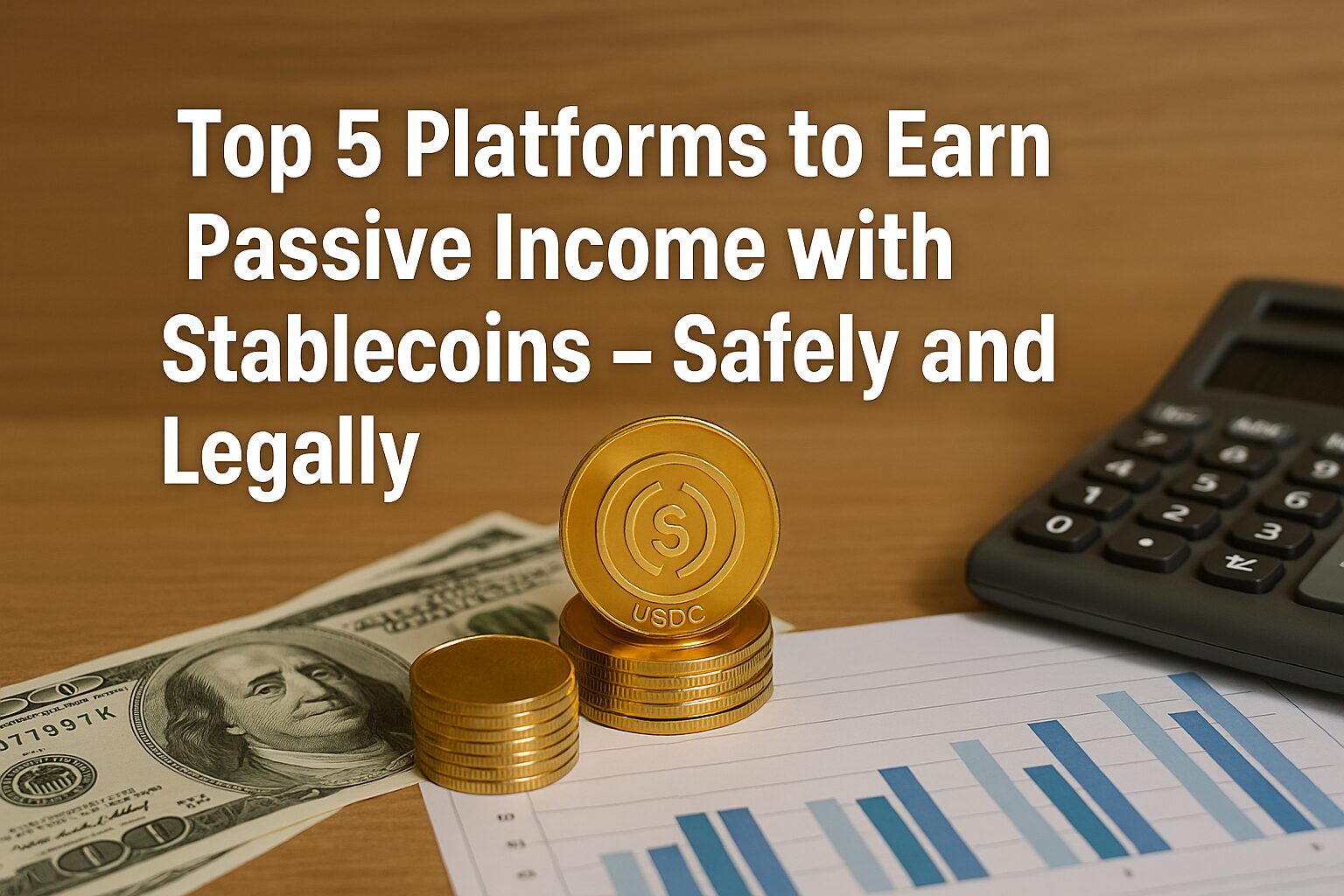Stablecoins have revolutionized the way we earn, save, and move money across borders. Beyond just stability, they’ve opened up a world of passive income opportunities—especially for digital nomads, remote workers, and those in countries with unstable fiat currencies. In this comprehensive guide, we’ll explore five of the most trusted global platforms that allow you to earn stablecoin-based interest legally, securely, and with minimal risk.
Why Stablecoins Are Ideal for Passive Income
Here’s why stablecoins are quickly becoming the preferred vehicle for low-risk, predictable earnings:
- Stability: Pegged to fiat currencies like the USD or EUR, stablecoins don’t experience wild price swings.
- Accessibility: Anyone with an internet connection and a crypto wallet can begin earning in minutes.
- Liquidity: Most platforms offer flexible withdrawal options and instant access to funds.
- Yield: Even in bearish markets, stablecoin platforms often offer 5–10% interest—far above traditional banks.
Real-Life Example
Sofia, a 29-year-old freelance designer in Argentina, saw her local currency lose 35% of its value in a single year. By converting her savings into USDC and depositing them on Nexo, she earned 9% APY—stabilizing her finances and creating a buffer against inflation.
Top 5 Platforms to Earn Stablecoin Interest
Let’s examine five platforms that stand out for safety, returns, and legal clarity.
1. Kraken: Regulated and Beginner-Friendly
Best For: U.S.-based users who prefer transparency and regulation
- Offers yield on USDC and USDT
- U.S. FinCEN registered and adheres to strict AML/KYC rules
- Very easy interface with clear performance tracking
Kraken is ideal for those who prioritize security and simplicity. Though yields are slightly lower than DeFi options, it makes up for it in trust and stability.
Use Case: Joe, an American retiree, uses Kraken to earn modest interest on $50,000 in USDC while enjoying FDIC-like peace of mind.
2. Nexo: High-Yield Interest with Daily Payouts
Best For: Passive income maximizers who want daily interest compounding
- Earn up to 10% APY on USDC, USDT, DAI
- Insurance on assets up to $375 million
- Offers crypto-backed loans and cashback
Nexo is especially popular among people who want simplicity and rewards in one platform. Your interest is paid daily and you can withdraw anytime without penalty.
Use Case: Chang, a Korean crypto investor, deposits $20,000 in USDT on Nexo and uses the earnings to cover rent while trading full-time.
3. Aave: Transparent DeFi Lending Protocol
Best For: Users who want full custody and decentralized control
- Non-custodial, built on Ethereum
- Transparent interest rate models based on smart contracts
- Supports over 10 stablecoins including GUSD, DAI, USDC
While more complex than centralized platforms, Aave offers peace of mind through smart contract visibility. All transactions and risk models are public and auditable.
Use Case: Marcus, a German developer, trusts only open-source finance. He earns yield through Aave’s lending pools while holding his keys at all times.
4. Binance Earn: Flexible and High-Return Options
Best For: Global users with varied earning strategies
- Earn 5–12% depending on lock-up period
- Fixed or flexible savings modes available
- Global customer support and app availability
Binance’s scale allows it to offer unique promotions, bonus pools, and launchpad rewards. For users seeking flexibility with some risk, it’s an attractive option.
Use Case: A Nigerian entrepreneur uses Binance Earn for her business treasury—splitting between flexible and fixed savings to maximize returns while maintaining liquidity.
5. Celsius (Under Reconstruction)
Best For: High-risk tolerance users seeking future opportunities
- Was a top performer before bankruptcy in 2022
- Currently being restructured under regulatory oversight
- May relaunch with stronger investor protections
While not functional yet, Celsius is a platform to watch. Its comeback could open new legal earning paths for early users.
Comparison Table
| Platform | Type | Interest Rate Range | Withdrawal Flexibility | Regulation Status |
|---|---|---|---|---|
| Kraken | Centralized | 3–6% | High | U.S. Regulated |
| Nexo | Centralized | 6–10% | High | EU Licensed |
| Aave | Decentralized | 2–7% | Medium | Smart Contract-Based |
| Binance Earn | Centralized | 5–12% | High | Global Access |
| Celsius | Centralized (Rebuilding) | TBD | Unknown | Pending Compliance |
Global Usage Scenarios
- Philippines: OFWs (Overseas Filipino Workers) convert remittances into USDC and stake on Binance Earn to generate yield for families back home.
- Turkey: Business owners use Nexo to shield savings from hyperinflation.
- South Korea: Digital workers use Aave and MetaMask for self-custody yield farming.
- Brazil: Entrepreneurs convert BRL to stablecoins to pay overseas suppliers and earn interest in between.
Stablecoin Interest FAQ
Is earning interest on stablecoins legal?
Yes—if the platform is registered in a compliant jurisdiction and interest income is reported in your taxes.
Is there a risk of losing money?
Yes. If the platform is hacked or the stablecoin depegs (loses value), you may lose funds. Always spread risk and research platform history.
Can I use multiple platforms at once?
Absolutely. Many users divide their funds between 2–3 platforms to diversify risk and compare returns.
Are there taxes on crypto interest?
In most countries, yes. Stablecoin interest is usually treated as income and must be reported accordingly.
Final Thoughts: Build Income Like a Bank
Banks take your money, lend it out, and earn interest. With stablecoins, you become the bank.
By choosing secure platforms, understanding the risks, and leveraging your global freedom, you can build a passive income engine that generates real returns—regardless of where you live.
